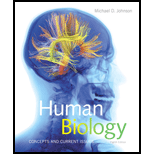
How do you think we should allocate cadaveric kidneys and other organs?
To review:
The ideal way for allocation of kidney and other organs.
Introduction:
The organ transplant is a procedure that is in use for many years and has been proved to be effective. The real problem with organ transplant is the unavailability of suitable organs. People are on the waiting list for the getting organs transplanted, for example, the kidney for years. The current organ allocation system is good, but some refinements are needed to facilitate the procedure.
Explanation of Solution
Certain organs like kidneys can be donated by living people as there are two kidneys for each person and one kidney can effectively perform the function for the whole body. However, the rest of the organs has to be taken from cadavers. There are many people that need different organs, kidneys being most sought after as kidney transplant is time-tested and have relatively better results.
The allocation process for these organs is better than it used to be a few years ago. Still, some modifications can be made in the allotment process that may help the people on the waiting list.
1. The younger patients should be given preference over old patients as they have a long life ahead of them.
2. Patients with better chances of accepting the kidney should be given preferences.
3. Certain regions have more chances of availability of kidney depending on population, medical facilities and people understanding the need for organ donation. Organs from these regions should be made available to adjusting regions.
4. The laws such as organs donated in the certain state should be used in the same state, should be abolished.
5. Financial incentives should be given to the relatives of the people who donated their organs.
Therefore, some of the current rules like giving kidneys to the patients who are on the list for a longer duration are causing more organ rejections. Some refinements are needed in these laws to make the waiting period shorter and to get a better outcome for the patients.
Want to see more full solutions like this?
Chapter 15 Solutions
Human Biology: Concepts and Current Issues (8th Edition)
- Outline the negative feedback loop that allows us to maintain a healthy water concentration in our blood. You may use diagram if you wisharrow_forwardGive examples of fat soluble and non-fat soluble hormonesarrow_forwardJust click view full document and register so you can see the whole document. how do i access this. following from the previous question; https://www.bartleby.com/questions-and-answers/hi-hi-with-this-unit-assessment-psy4406-tp4-report-assessment-material-case-stydu-ms-alecia-moore.-o/5e09906a-5101-4297-a8f7-49449b0bb5a7. on Google this image comes up and i have signed/ payed for the service and unable to access the full document. are you able to copy and past to this response. please see the screenshot from google page. unfortunality its not allowing me attch the image can you please show me the mathmetic calculation/ workout for the reult sectionarrow_forward
- Skryf n kortkuns van die Egyptians pyramids vertel ñ story. Maximum 500 woordearrow_forward1.)What cross will result in half homozygous dominant offspring and half heterozygous offspring? 2.) What cross will result in all heterozygous offspring?arrow_forward1.Steroids like testosterone and estrogen are nonpolar and large (~18 carbons). Steroids diffuse through membranes without transporters. Compare and contrast the remaining substances and circle the three substances that can diffuse through a membrane the fastest, without a transporter. Put a square around the other substance that can also diffuse through a membrane (1000x slower but also without a transporter). Molecule Steroid H+ CO₂ Glucose (C6H12O6) H₂O Na+ N₂ Size (Small/Big) Big Nonpolar/Polar/ Nonpolar lonizedarrow_forward
- what are the answer from the bookarrow_forwardwhat is lung cancer why plants removes liquid water intead water vapoursarrow_forward*Example 2: Tracing the path of an autosomal dominant trait Trait: Neurofibromatosis Forms of the trait: The dominant form is neurofibromatosis, caused by the production of an abnormal form of the protein neurofibromin. Affected individuals show spots of abnormal skin pigmentation and non-cancerous tumors that can interfere with the nervous system and cause blindness. Some tumors can convert to a cancerous form. i The recessive form is a normal protein - in other words, no neurofibromatosis.moovi A typical pedigree for a family that carries neurofibromatosis is shown below. Note that carriers are not indicated with half-colored shapes in this chart. Use the letter "N" to indicate the dominant neurofibromatosis allele, and the letter "n" for the normal allele. Nn nn nn 2 nn Nn A 3 N-arrow_forward
 Biology (MindTap Course List)BiologyISBN:9781337392938Author:Eldra Solomon, Charles Martin, Diana W. Martin, Linda R. BergPublisher:Cengage Learning
Biology (MindTap Course List)BiologyISBN:9781337392938Author:Eldra Solomon, Charles Martin, Diana W. Martin, Linda R. BergPublisher:Cengage Learning Human Physiology: From Cells to Systems (MindTap ...BiologyISBN:9781285866932Author:Lauralee SherwoodPublisher:Cengage Learning
Human Physiology: From Cells to Systems (MindTap ...BiologyISBN:9781285866932Author:Lauralee SherwoodPublisher:Cengage Learning Comprehensive Medical Assisting: Administrative a...NursingISBN:9781305964792Author:Wilburta Q. Lindh, Carol D. Tamparo, Barbara M. Dahl, Julie Morris, Cindy CorreaPublisher:Cengage Learning
Comprehensive Medical Assisting: Administrative a...NursingISBN:9781305964792Author:Wilburta Q. Lindh, Carol D. Tamparo, Barbara M. Dahl, Julie Morris, Cindy CorreaPublisher:Cengage Learning





